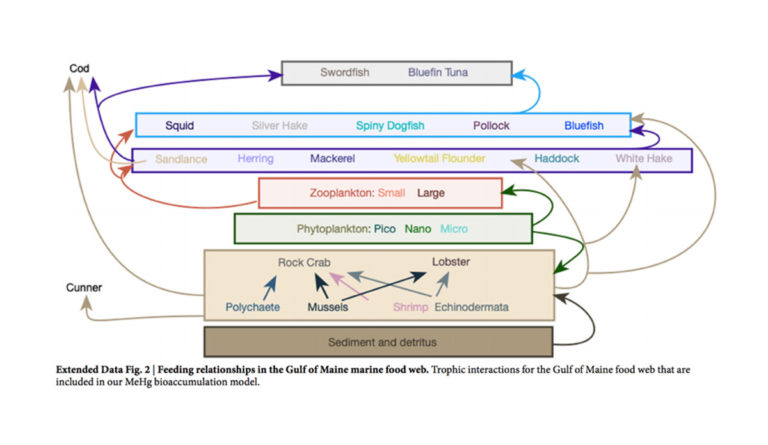Fish Switch
The concentration of a potent neurotoxin, methylmercury, in saltwater fish is increasing as a result of climate change and overfishing.

Read Time: 2 minutes
Published:
Climate change is coming for your fish tacos. Methylmercury (MeHg) is a potent neurotoxin present in seafood consumed by over three billion people across the world. According to a recent study, the concentration of MeHg in saltwater fish is increasing as a result of climate change and overfishing. Nearly 80% of the mercury (Hg) emitted into the atmosphere from natural and human sources—this includes emissions from things like forest fires and fossil fuels—is deposited in the ocean and then converted by microorganisms to MeHg.
In the US, 82% of MeHg exposure comes from eating saltwater fish and 40% comes from fresh and canned tuna alone. High levels of MeHg in children can lead to neurocognitive deficits that persist into adulthood and impair one’s ability to perceive, process, and analyze visual patterns and images. The global costs associated with high levels of MeHG exceed $20 billion.
The image above illustrates the model researchers used to determine MeHg accumulation in fish from the Gulf of Maine and highlights the interconnectedness of species across the food chain. The predatory fish at the top of the food web have the highest concentrations of MeHg and the arrows represent prey/predator relationships. For example, the blue arrow pointing toward bluefin tuna and swordfish means they eat the fish below them (squid, silver hake, spiny dogfish, etc.)—the arrow points toward the “eater.”
This food chain is also directly impacted by overfishing that disrupts the typical eating habits of fish. In the 1970s, cod consumed 8% more small cluepeids than in the 2000s as a consequence of human overharvesting of herring. Consequently, MeHg concentrations in cod the 1970s were 6-20% lower than in the 2000s when the cod diet relied more heavily on larger herring, lobster, and other macroinvertebrates with lower MeHg concentrations.
But it’s seawater warming that has principally led to shifts in food availability for predatory fish. Warmer water temperatures force certain prey to flee to cooler waters, changing the feeding patterns of fish at the higher end of the food chain. A change of just one degree Celsius can result in ~33% increase in MeHg concentration of cod and ~30% in Atlantic bluefin tuna, the two fish most consumed by humans in their tacos and sandwiches.
Databyte via Schartup, Amina T., et al. “Climate Change and Overfishing Increase Neurotoxicant in Marine Predators.” Nature, vol. 572, no. 7771, 2019, pp. 648–650.



